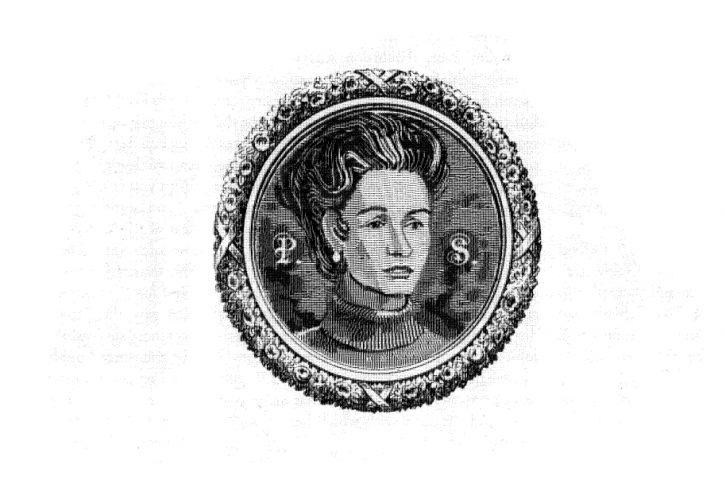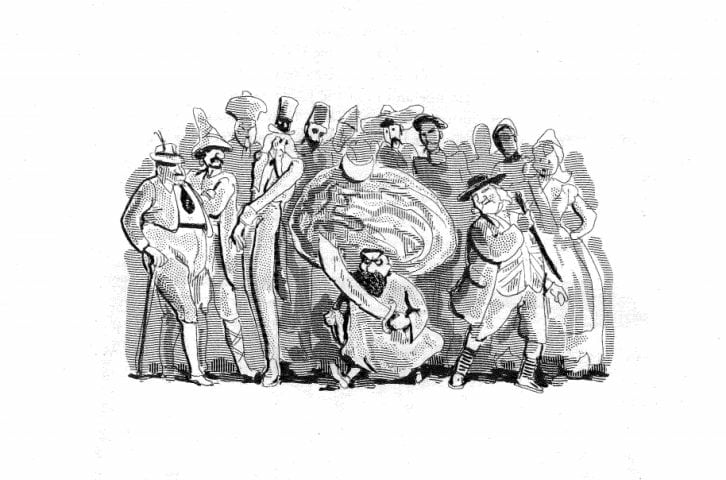Books Reviewed
D
onald Critchlow, a professor of history at Saint Louis University, has presented us with a comprehensive, meticulously researched, and thoroughly readable biography of the woman who, over the past half-century, has been the principal mobilizer of grassroots conservatism in America. If Bill Buckley has earned the unquestioned right to be hailed as "the godfather of the American conservative movement," then Phyllis Schlafly has a well-nigh equal claim to be recognized as its godmother.
This is not the first biography of Schlafly. A quarter of a century ago Carol Felsenthal published a more personal biography, The Sweetheart of the Silent Majority, that told her story up to the election of Ronald Reagan. But a lot of time has passed since then, and Critchlow's book is likely to be the most comprehensive account of Schlafly's remarkable life for quite some time to come.
Although best known for her heroic efforts in defeating the Equal Rights Amendment in the 1970s, the rest of Schlafly's story is equally remarkable. Born Phyllis Stewart into a devout Catholic family in St. Louis in 1924, she was the valedictorian of her class in the Academy of the Sacred Heart, put herself through Washington University (financing her wartime education by working night shifts at the St. Louis Ordnance Plant, testing ammunition by firing rifles and machine guns), graduated Phi Beta Kappa, and received her master's degree from Radcliffe in 1945, earning A's in all her classes. (Thirty years later, at the age of 51, tiring of criticisms that she "wasn't a lawyer," she enrolled in Washington University Law School and graduated in 1978.)
After Radcliffe, Stewart landed a job in Washington, D.C., as a researcher for the American Enterprise Association (later the American Enterprise Institute), an early sprig of what was later to flower as the American conservative movement. It was during the year she spent at the AEA that Stewart received what Critchlow calls "her first education as a political conservative," reading Henry Hazlitt's critique of Keynesianism, John T. Flynn's denunciations of Roosevelt and the New Deal, and Friedrich Hayek's The Road to Serfdom. More importantly, she learned how to recast complex ideas in language accessible to average readers. From Washington, she returned to St. Louis, ready to do battle for the conservative cause.
In 1949 she married Fred Schlafly, a lawyer in Alton, Illinois's leading firm, just across the Mississippi from St. Louis. Schlafly was 15 years her senior, but they shared a devout Catholicism and a deep conservative temperament. They worked together for conservative causes until his death in 1994. (They also raised six children—a fact that harried parents may want to bear in mind as they follow Phyllis Schlafly's astonishing career.)
Three years after becoming Mrs. Phyllis Schlafly, she wrested the Republican nomination for a Congressional district from the local machine's candidate, but lost the ensuing race against a five-term incumbent in the heavily Democratic Illinois district. But she was, at the same time, finding her footing as a member of the Republican Right—supporting Taft against Eisenhower in the 1952 convention, and becoming a force in the Illinois Federation of Republican Women and the Daughters of the American Revolution.
To be a conservative in America in the 1950s was to be an anti-Communist. In the first half of the decade, the issue became intertwined with the name and personality of Wisconsin Senator Joseph McCarthy, but it was far larger than that. Throughout the 1950s Schlafly deepened her identification with the anti-Communist cause, and in 1958 she and her husband launched the Cardinal Mindszenty Foundation (named after the imprisoned Hungarian prelate), as a consciously Catholic parallel to Fred Schwarz's Christian Anti-Communism Crusade, which was largely supported by evangelical Protestants.
By 1960, however, anti-Communism as an issue had suffered as a result of the Senate's censure of McCarthy in 1954 and his death in 1957, as well as the long-overdue purge of Communists and their sympathizers from the ranks of government, the unions, and elsewhere. Conservatives were broadening their concerns to include national defense, the growth of big government, and the perceived threats to traditional values. Above all, there had arisen in the late 1950s a vigorous senatorial spokesman for conservative principles. After a premature attempt by some of his supporters to wrest the 1960 presidential nomination from Richard Nixon, Barry Goldwater was emerging as the clear conservative champion in party contests ahead—including the 1964 convention. Schlafly, who had hitherto been best known in Illinois and the Midwest, captured national attention in 1964 with her book A Choice Not an Echo, which proclaimed Goldwater the leader of the conservative movement, espousing policies distinctly different from those of the party's "moderate" leaders.
The book sold an incredible 3.5 million copies in the months preceding Goldwater's nomination in San Francisco and thereafter in the months before Election Day. Schlafly had become a national figure, and was in no mood to give up the fight for conservatism merely because Goldwater was soundly trounced by Lyndon Johnson. Her emphasis, however, now shifted squarely to the issue of national defense, and she co-authored a series of books with Rear Admiral Chester C. Ward (ret.), research director for the American Security Council, warning against what they saw as the Johnson Administration's thoroughly inadequate response to the Soviet threat.
But the liberal Republican establishment recognized the danger she represented to their hope of regaining control of the party, and in one of its final vindictive spasms it prevented her from rising from the vice presidency of the National Federation of Republican Women, to which she had been elected, to its presidency, which traditionally followed.
Schlafly's concentration on the issue of national defense, and specifically strategic nuclear policy, was probably responsible for her blunder in supporting Richard Nixon for the 1968 Republican nomination when California governor Ronald Reagan made a serious and almost successful bid to take it from him.
Reagan's effort to win the nomination in 1968 is often overlooked—not least because Reagan, who shared the typical politician's distaste for reminiscing about his defeats, later tended to dismiss it as merely an effort to "keep the California delegation together." But it was a serious effort nonetheless that came agonizingly close to success, led by a shrewd New York political organizer, F. Clifton White. A trio of British reporters, covering the convention, correctly described Nixon's final victory margin as "almost insultingly small." It is far from impossible that, if Schlafly had thrown her national grassroots organization behind him, Reagan would have won the nomination, gone on to defeat Humphrey in November, and spared America Watergate, a presidential resignation, and defeat in Vietnam.
In any case, disillusion was not slow in coming. Schlafly, who worked passionately for Nixon during the campaign, had no desire for a full-time job in his administration, but she did request appointment to the powerful and prestigious President's Foreign Intelligence Advisory Board. Nixon not only failed to appoint her to the post, but designated New York governor Nelson Rockefeller, leader of the moribund liberal wing of the GOP, instead.
Schlafly was done with Nixon. After running unsuccessfully against a Democratic incumbent in another of Illinois's congressional districts in 1970, she supported Congressman John Ashbrook's doomed but symbolic conservative battle against Nixon in the 1972 Republican primaries. And then, in that same year, she found the issue with which her name will forever be linked.
* * *
When the Equal Rights Amendment passed Congress in March 1972, the common assumption was that this major initiative by America's fast-growing feminist movement would easily assume its "rightful place" in the Constitution. (It had, for one thing, the enthusiastic support of both Gerald and Betty Ford.) Within a year 30 states had ratified it, and only eight more were needed. But the ultra-feminists, and America's politicians generally, hadn't reckoned with Phyllis Schlafly. In September 1972 she organized STOP ERA. By early 1973 there were chapters in 26 states. Schlafly's previous network of supporters, in the National Federation of Republican Women and among fans of her books (especially A Choice Not an Echo), were swiftly supplemented by new activists, who were kept informed by her monthly publication, the Phyllis Schlafly Report. Her influence soared.
Critchlow recounts the story of her battle against ERA in painstaking detail. Here, let it suffice to say that Schlafly's remarkable work, together with the swing to the right in American public opinion which she had done so much to promote, and which elected Reagan (with Schlafly's enthusiastic support) in 1980, doomed ERA. Despite Congress's desperate extension of the ratification deadline until June 30, 1982 (ignoring the seven-year limit allowed for the amendment's consideration), the approval of the necessary 38 state legislatures was never obtained. ERA died that last day of June, and Schlafly held a huge and joyful party the same evening in the ballroom of Washington's Shoreham Hotel. She had always known how to get on the nerves of the ultra-feminists. ("I want to thank my husband, Fred Schlafly," she began one talk, "for allowing me to make this speech.") No wonder the late Betty Friedan, one of feminism's more caustic leaders, told her in public, "I'd like to burn you at the stake."
In the more than two decades since the defeat of ERA, Schlafly has continued her battle for conservatism on a host of fronts. In 1977-78 she and other conservatives had already waged (and lost) a vigorous battle against the treaty that gave the Panama Canal to Panama. She was more successful in 1979, when she joined in the widespread public opposition to the SALT II treaty with the Soviet Union, and President Carter was forced to abandon any hope of its ratification by the Senate. She was, of course, deeply involved in the "pro-family" and anti-abortion movements that played such an instrumental role in Reagan's 1980 victory. She surprised a good many conservatives in the early 1980s by opposing their call for a constitutional convention to adopt a "Balanced Budget Amendment." She feared such a convention might be taken over by the Left, and when the smoke blew away Schlafly's legions had blocked support for a convention by just enough state legislatures to kill the idea.
By 2003 the Eagle Forum, which she had founded in 1975, possessed, together with its tax-exempt arm the Eagle Forum Education & Legal Defense Fund, net assets in excess of $15 million. To be sure, there are other conservative women's organizations in existence now, and one of them, Concerned Women for America, boasts 600,000 members (many of them evangelical Protestants)—far more than the Eagle Forum. But there is simply no rival for the impact Phyllis Schlafly personally has had, over the past 60 years, in the field of grassroots conservatism.
Donald Critchlow's splendid biography of her adds an indispensable chapter to the American conservative movement's remarkable story.



